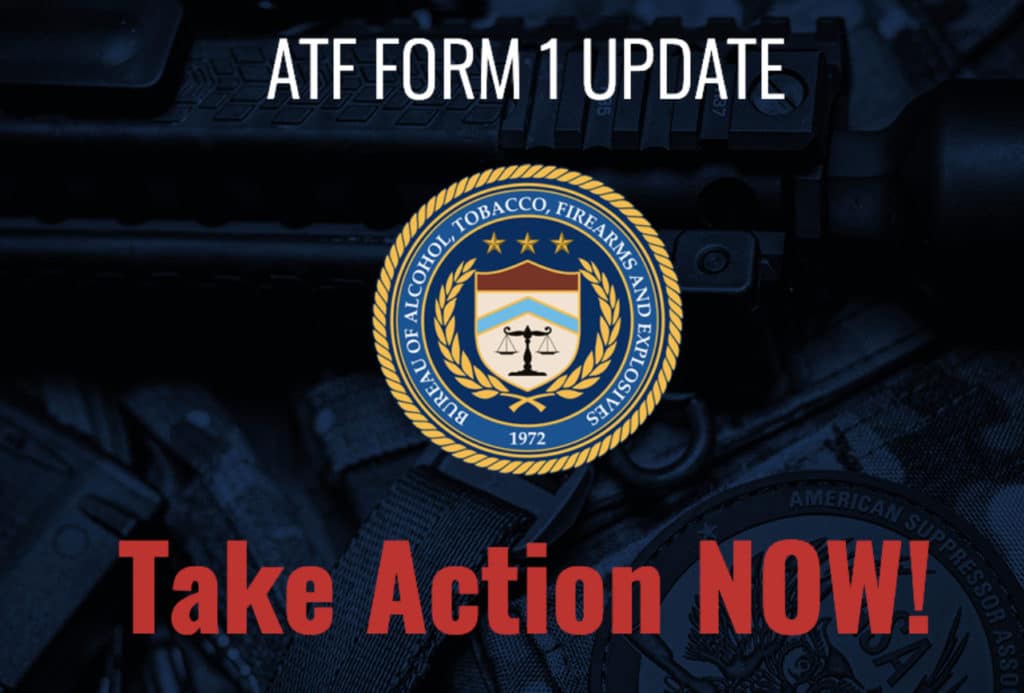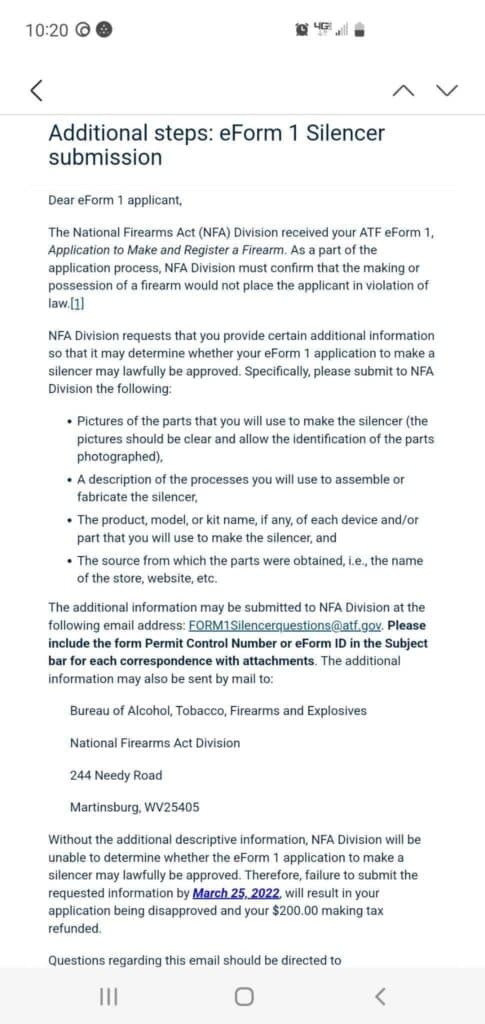
Homemade firearms aren’t the only constitutionally protected items under fire from the Bureau of Alcohol, Tobacco, Firearms, and Explosives (ATF). In recent weeks, the ATF has launched an all-out attack on homemade suppressors as well.
On February 28, the ATF made waves when it denied 847 Form 1 applications to make suppressors. According to the American Suppressor Association (ASA), the agency did so because officials believed applicants were using solvent trap kits to construct their suppressors.
Then, on March 3, the ATF notified every applicant with a pending Form 1 suppressor application that they would be required to provide pictures and descriptions of all parts and components used to make the suppressor or their application would be rejected.
SEE ALSO: ATF Admits It Has Nearly 1 Billion Gun Records, GOP Lawmakers Ask, ‘How Is This Not a Registry?’
“Despite previously approving thousands of Form 1 applications for individuals and legal entities that have used these kits in recent years, it seems ATF has now decided to change course without any public explanation or justification,” the ASA explained. “What is clear is that ATF has unilaterally decided that the National Firearms Act (NFA) applies to these kits, and therefore any applicant applying to make a suppressor using one might be guilty of a crime.”
Screenshots of this March 3 missive rocketed around the pro-2A world as suppressor hobbyists worried that they would be forced to submit self-incriminating photos or risk losing their application along with the $200 tax stamp.

Solvent traps are common gun cleaning devices used to capture cleaning solvent. They’re screwed onto the end of a barrel, but they do not have a hole bored through the center or a serial number, and many are not designed to withstand bullet passthrough.
But their shape and design have naturally prompted solvent trap owners to convert them into suppressors. Building a homemade suppressor is legal provided the builder submitted the proper paperwork to the ATF. Those Form 1s can be submitted online (along with the $200 tax stamp), and an approved Form 1 allows the applicant to permanently convert a solvent trap into a suppressor.
SEE ALSO: Get a Suppressor in as little as 30 days with the NEW ATF eForm System – Step-by-Step
It looks like the ATF may be trying to change that without going through the proper rulemaking process. The agency is in the final stages of releasing a new rule that would ban so-called 80 percent receivers, but they have proposed no such rule banning products that could be readily converted into a suppressor.
“This type of behind-closed-door rulemaking has to stop,” the ASA writes. “It’s time to insist that ATF stop treating the upstanding citizens it regulates like criminals. It’s time for ATF rulemaking to occur in the open. And it’s time to remove suppressors from the NFA so that law-abiding Americans can protect their hearing while exercising their Second Amendment rights without tax or fear of government retribution.”
The American Suppressor Association encourages all concerned Americans to contact their elected officials to voice opposition to these actions by the ATF. You can do so HERE.